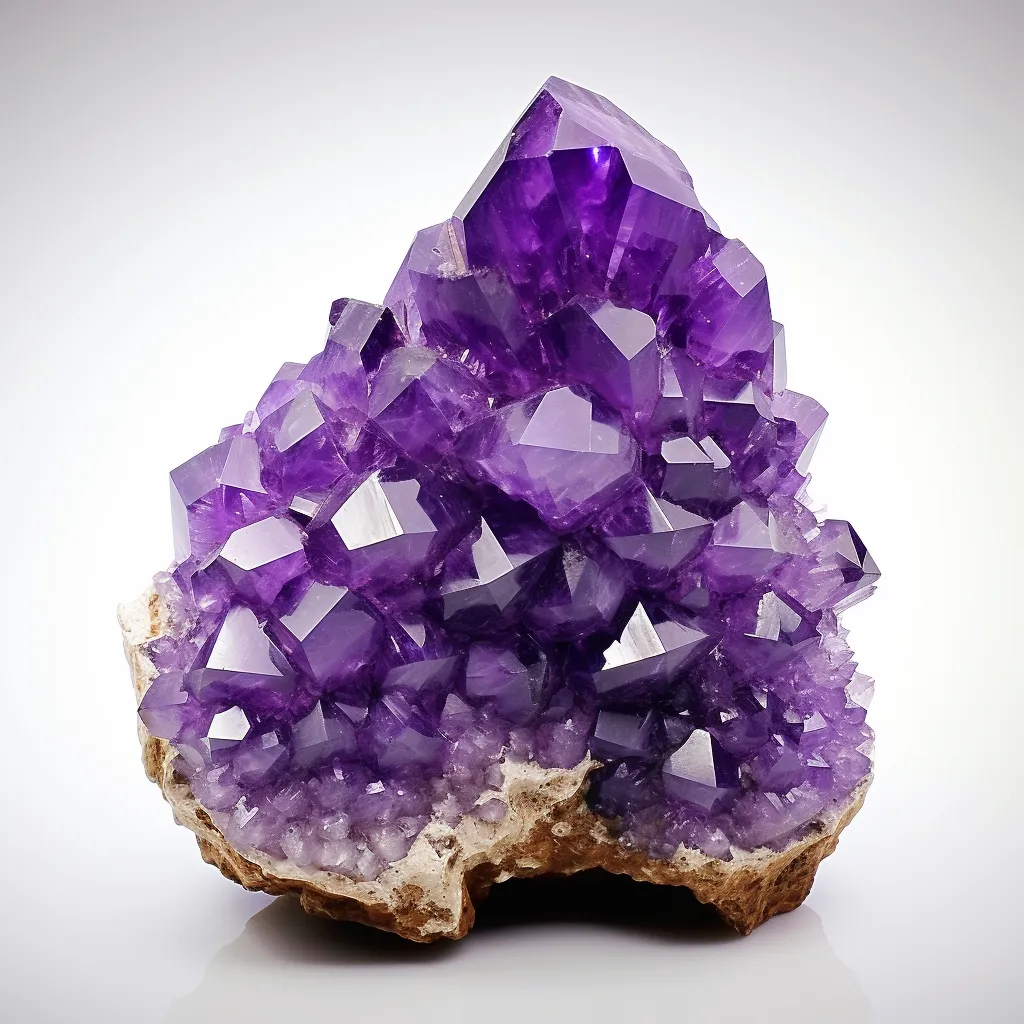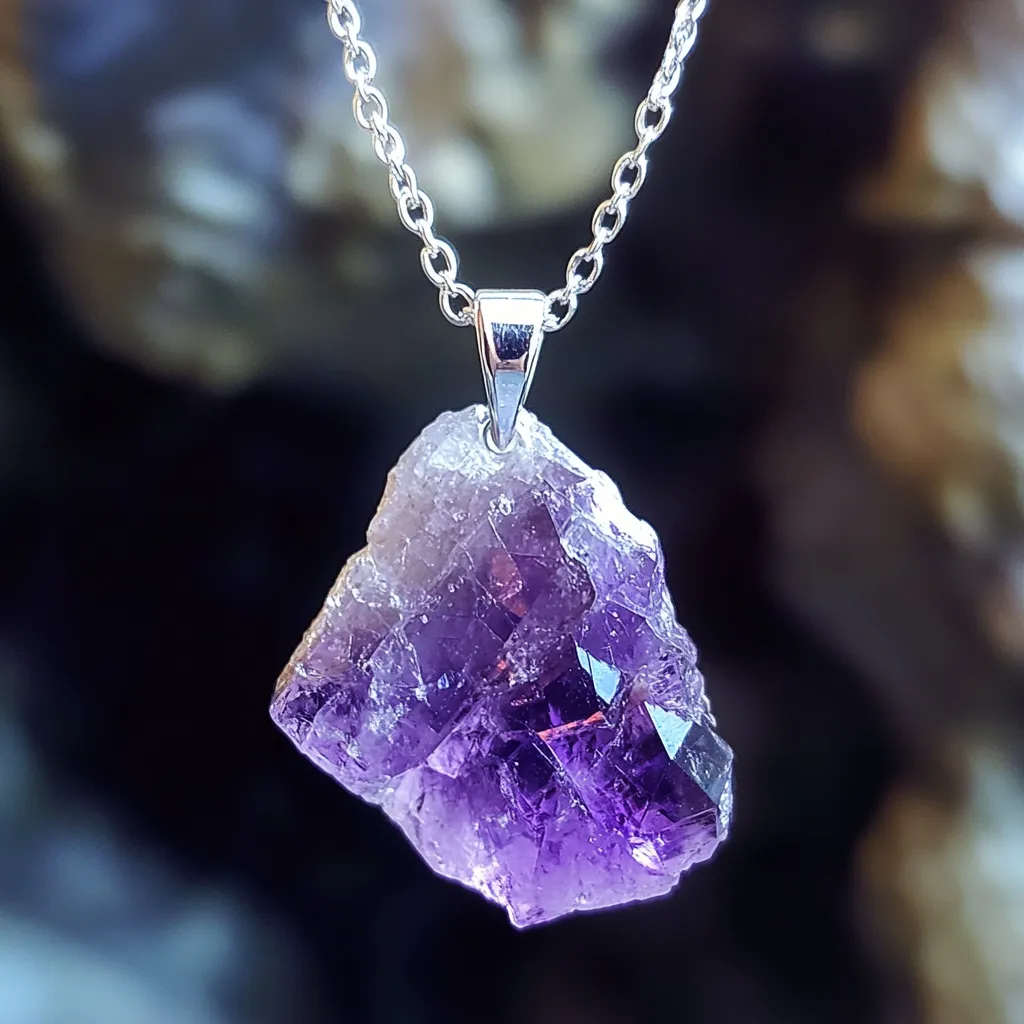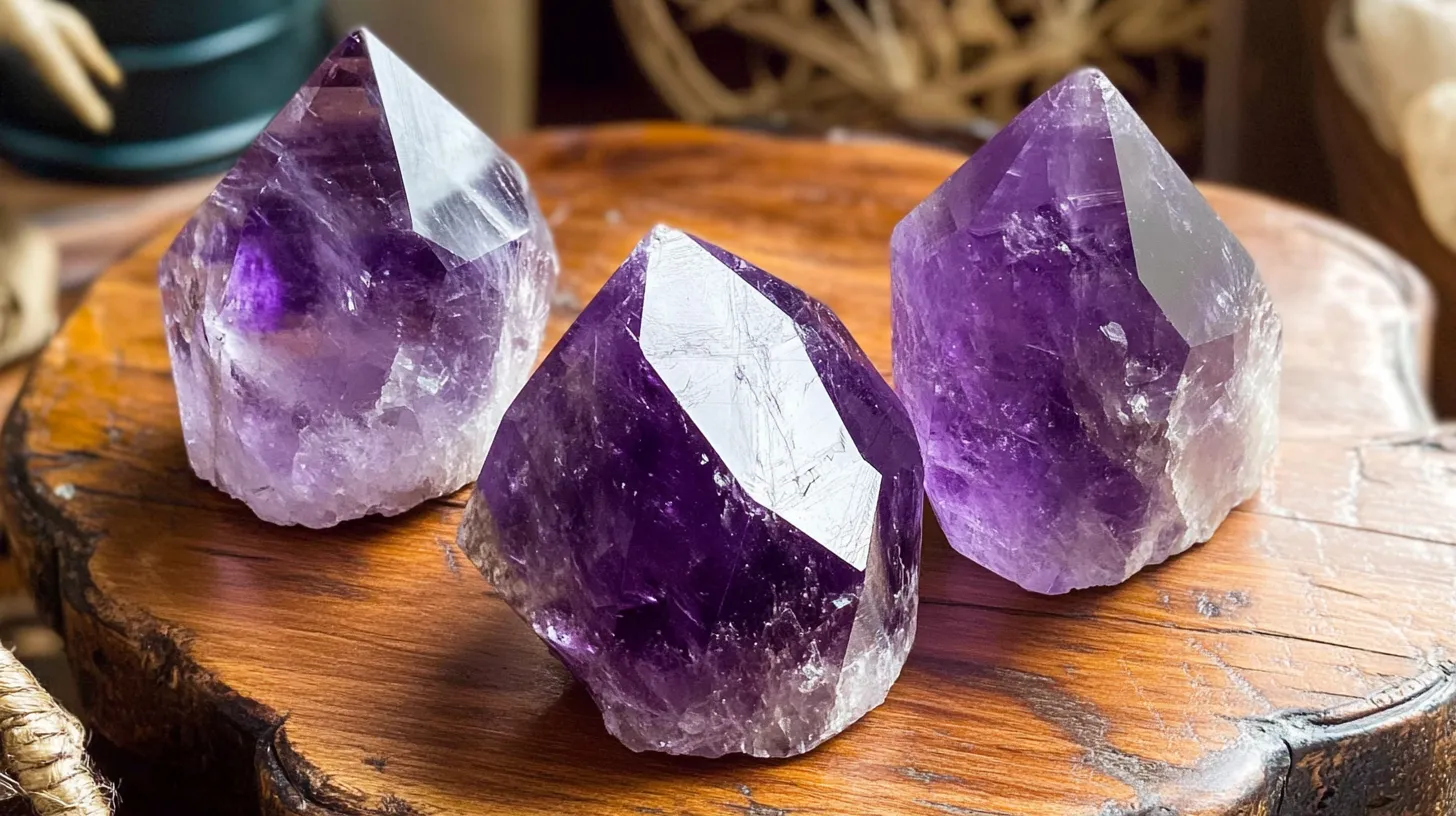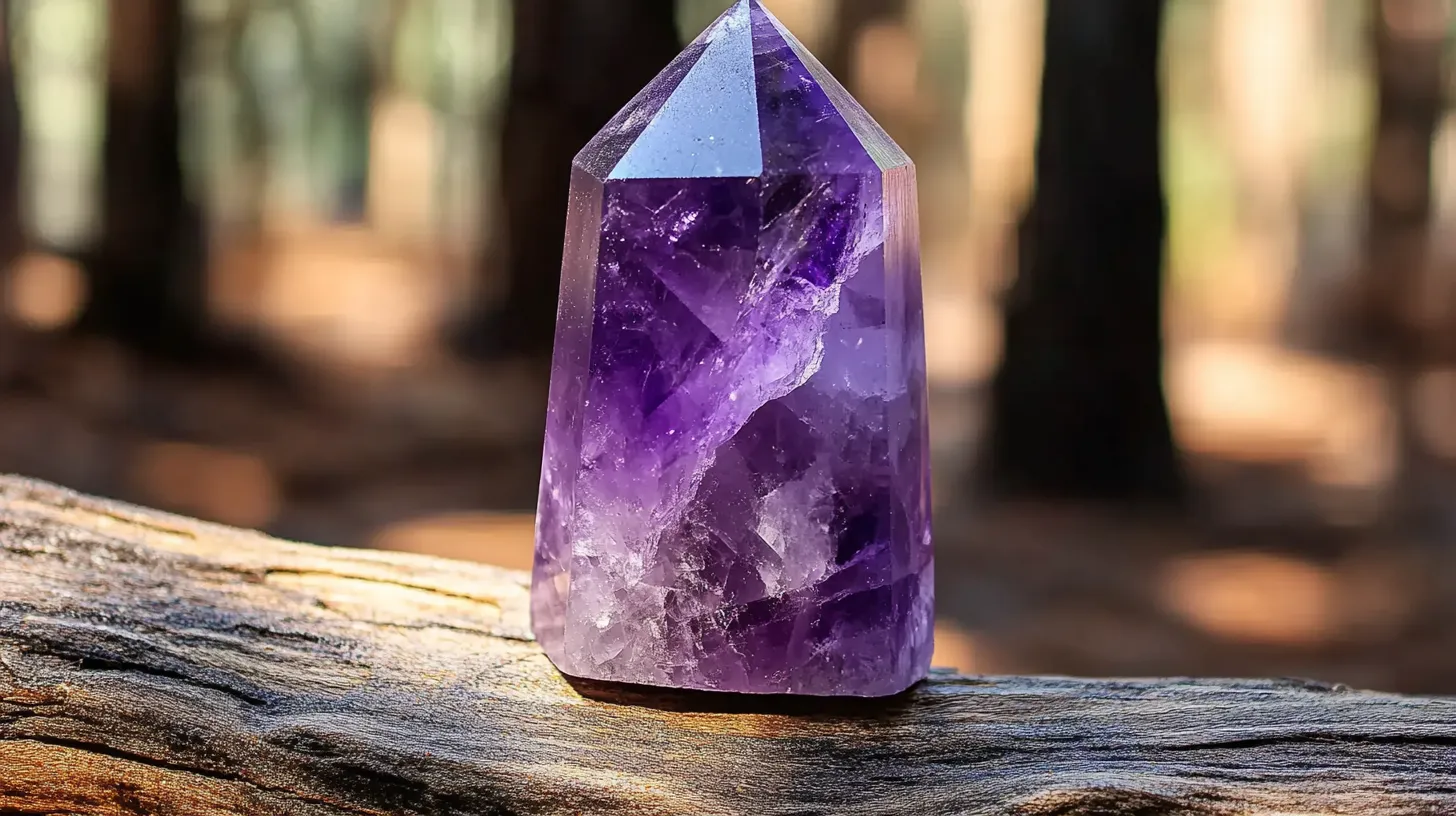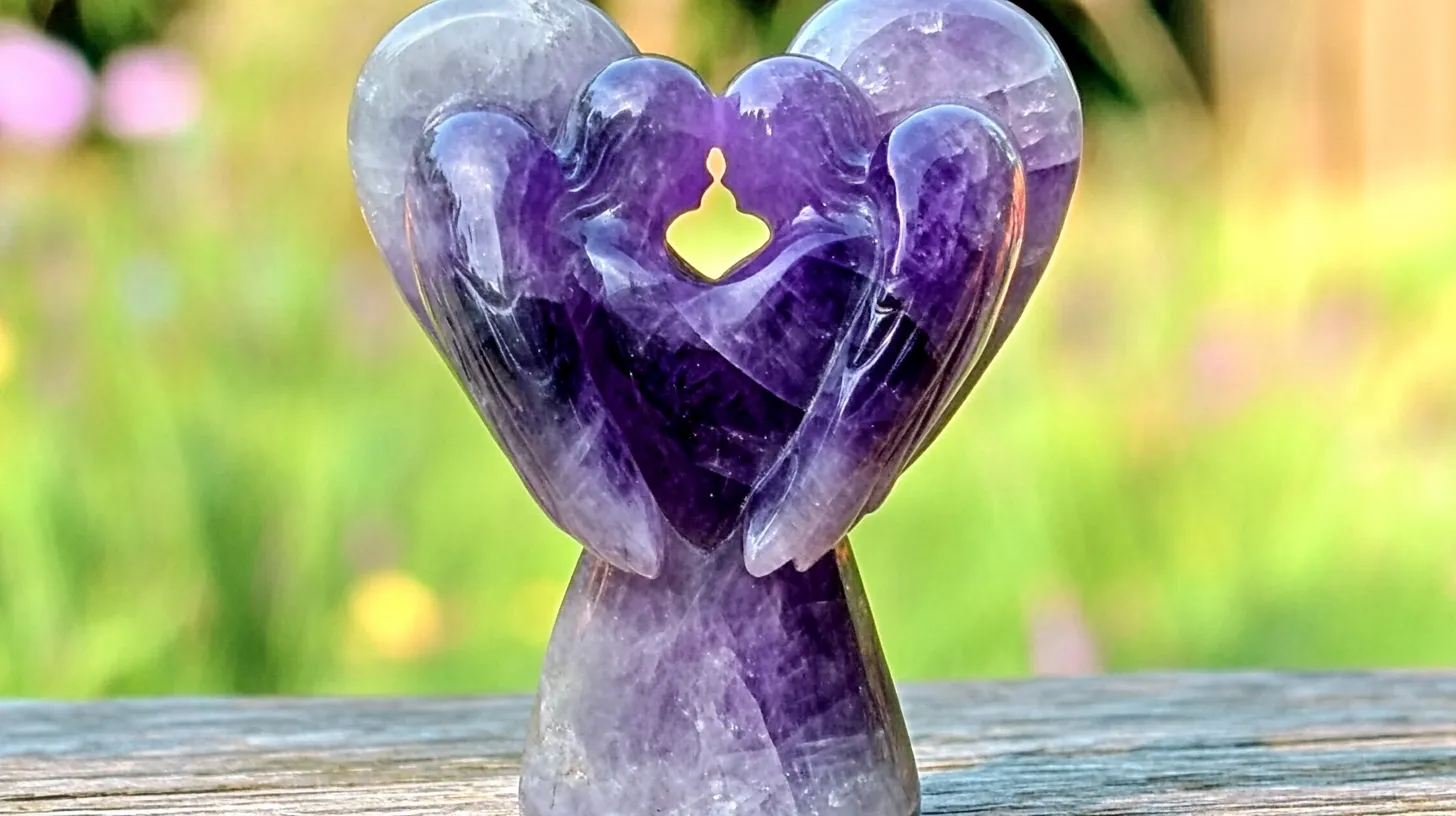

Where Can One Find Amethyst?
Among the most prized gemstones in the world, amethyst boasts sparkling clarity and deep purple tones. Could you please share where it truly originates? Amethyst has a wonderful journey before it gets to your hands, even if you find it glittering in jewellery stores or shown as raw crystals in metaphysical shops. Found all across the world, amethyst deposits vary in quality, colour, and quantity depending on geological circumstances. Let’s enter the realm of amethyst mining and investigate the locations of this breathtaking gemstone.

A Geological Formation: Amethyst
Knowing the manufacturing process of amethyst will aid us in locating it later. Often found inside geodes or volcanic rock holes, amethyst is a type of quartz found in igneous and metamorphic rocks. Over millions of years, these crystals develop from silica-rich solutions, including iron seeping into rock voids. Amethyst’s characteristic purple hue results from the iron interacting with natural radiation from nearby rocks. The deeper the purple, the more iron there is and the more radiation exposure during creation.

Leading Nations Produce Amethysts
Though almost every continent has amethyst, some sites are known for yielding the most exquisite and superior specimens. Here is a list of some of the most well-known nations producing amethyst together with details on what distinguishes their stones:
| Country | Amethyst Characteristics |
|---|---|
| Brazil | Often big crystals with great clarity are deep purple. |
| Uruguay | Rich purple with great saturation is found in Geodes. |
| Zambia | Dark purple with a reddish tint and superior stones. |
| Russia | Sometimes with zoning, pale lilac to deep purple. The colour is light to medium purple, often with colour variations. |
| Madagascar | Open amethyst with a bluish tint. |
| United States | Commonly found in Arizona, Georgia, and North Carolina, has a medium purple hue. |
Each of these locales has its distinct geological circumstances, which contribute to the unique properties of the amethyst found there.

South America: A Treasure Trove of Amethyst
Brazil and Uruguay are two of the biggest sources of amethyst in the world. Brazilian amethyst is renowned for its large crystal formations, often found in volcanic geodes that can be as big as a person! The colour ranges from light lavender to deep violet. Uruguay’s amethyst is renowned for its strong, deep purple tones, on the other hand. Although the crystals are often smaller than those from Brazil, their high colour saturation makes them very valuable.
Amethyst is widely mined in both nations from basalt rock formations. The extraction process involves cutting open geodes, revealing stunning clusters of purple crystals inside. These geodes can be found in large quantities, making Brazil and Uruguay dominant forces in the global amethyst market.

Zambian Amethyst: A Dark and Mysterious Beauty
Zambia has gained a reputation for producing some of the finest amethyst in the world. Zambian amethyst tends to be a deep, dark purple, sometimes with hints of red or blue. This hue makes it stand out from the Brazilian and Uruguayan varieties. The high iron content in the region’s soil, combined with specific geological conditions, results in these richly coloured stones.
Amethyst mines in Zambia, such as those in the Mapatizya area, produce high-quality gems that are widely used in jewellery. Unlike South American amethyst, which is often found in geodes, Zambian amethyst is typically extracted from hard rock formations.

Russian Amethyst: The Historical Gemstone
Russia was historically one of the most important sources of amethyst, particularly in the Ural Mountains. Russian amethyst is noted for its range of colours, from light lilac to deep violet. Some stones also reveal stunning colour zoning, with sections of different tints mixing together in a single crystal.
During the 19th century, Russian amethyst was highly sought by European nobility. The gemstone was widely used in crowns, sceptres, and sacred jewellery. While Russia is no longer the primary source of amethyst, its historical significance still makes Russian stones highly sought after by collectors.

Amethyst in North America
Amethyst is also found in North America, with large concentrations in the United States and Canada. In the U.S., states, including Arizona, Georgia, and North Carolina, are recognised for their amethyst deposits. The Four Peaks Mine in Arizona, for example, produces a deep purple amethyst that is rated one of the best in the country.
Canada, notably in Ontario, has some excellent amethyst deposits as well. Thunder Bay, Ontario, is home to magnificent amethyst formations with a peculiar reddish tint generated by haematite inclusions. Both ornamental and jewellery uses for these stones are somewhat common.
| Location in North America | Amethyst Personality Traits |
|---|---|
| Four Peaks, Arizona | Deep purple is premium and used in exquisite jewellery. |
| Thunder Bay, Canada | Gemstones appear reddish-purple due to haematite inclusions. |
| Georgia and North Carolina | Medium purple discovered in quartz veins. |

Amethyst Mining and Ethical Source Policies
Like any gemstone, amethyst mining affects the local communities and the surroundings. Buying amethyst requires ethical consideration since some mining businesses might not follow sustainable methods. Fortunately, many vendors now give responsible mining methods first priority, thereby guaranteeing fair treatment of workers and environmental protection.
Ask amethyst vendors where the stone came from and if it was mined ethically. Fair trade gemstones ensure the preservation of natural resources and support local mining towns.

Discovering Amethyst Personally
Unbelievably, you can actually locate amethyst yourself; you do not always have to buy it from a jeweller! Amateur rockhounds can search for amethyst crystals at various sites. For a nominal charge, some sites let guests dig for their jewels.
Here are some pointers on locating your amethyst:
- Research: Recognised amethyst places; some public mining operations let guests pick amethyst. Before you travel, review local rules.
- Look at Volcanic Rock Formations: Amethysts are usually found in basalt or granite formations; hence, these are wonderful places to start.
- Use the Correct Tools: Safety goggles, a chisel, and a rock hammer will enable you to securely remove amethyst from rock formations.

Last Views
From the rough mountains of Zambia to the mediaeval mines of Russia, amethyst is found all around the world—from the volcanic settings of Brazil. Amethyst is an amazing gemstone since every place generates stones with different colours and properties. Knowing where amethyst comes from offers a whole new degree of respect for this lovely stone, whether you’re searching for your crystal or purchasing a polished piece of jewellery.

